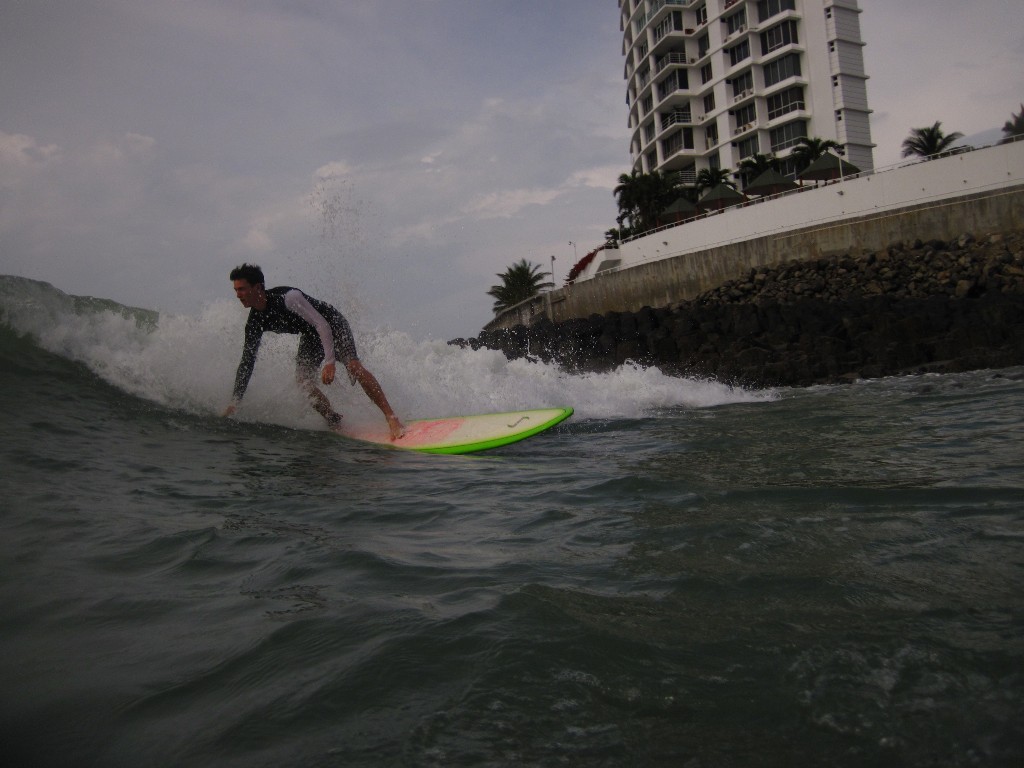Learn to Surf on the Pacific Coast of Panama

The green season is here and for the surfing community that means, less wind, and more consistent southwesterly swells! The rainy season in Panama can start as early as April and last until early December. The good news is that with the rain also comes surf season for the Pacific coast of Panama. Panama’s Pacific beaches offers waves for all skill levels and personal preferences.
From roping point breaks (waves breaking over rocks or a reef) to powerful beach break (waves breaking on a sandy bottoms) Panama has it all. The ocean is your playground and there is no better time to enjoy it than right now. If you are new to surfing you may have some hesitations. However, rest assured that learning to surf is all about stepping outside your comfort zone and giving it your all.
Don’t worry if you don’t succeed right away. Surfing can take time to master but you can still have a lot of fun learning. Don’t be discouraged if you get tumbled by a few waves. Stay in in the water and keep on paddling! Surfing is about having fun and enjoying the beauty of the ocean. Even if you don’t catch a single wave, floating on a surfboard and taking in the sun is unbeatable.
If you are looking to get your surfer feet wet, here some helpful tips to get you started:
1- Enlist some help. A lesson on shore, heading out with a buddy who surfs or watching tutorials on YouTube, will help put you on the right track. The knowledge you gain before paddling out is sometimes the most important.
2- Choose the right board. Bigger is better! Okay, so it may not look as cool as Kelly Slater’s board, but you will be thankful you went with a foam-top longboard when you are in the water the first couple times. A larger more buoyant board will give you a fighting chance to paddle into the waves and get up on your feet.
3- Pick your spot. There are plenty of surf breaks on the Pacific coast suitable for beginners. Amidst the fast barrels and beach breaks are some great slow rolling point breaks suitable for first-timers. Point breaks offer a more consistent take offs, and are often easier to learn on.
4- Relax. Take a deep breath. The more relaxed and confident you are, the more able you are to react the right way. Often as a wave approaches our first reaction is to panic. Paddle full force, don’t look back, keep paddling and breathe. More often than not you will find yourself catching the wave. If you bail, paddle back out and try it again!
5- Know your limits. If you are not comfortable with the size of the waves, the roughness of the ocean, or obstacles in the water, enjoy the day from the beach. Don’t paddle out in conditions that are above your skill level.
6- HAVE FUN!
